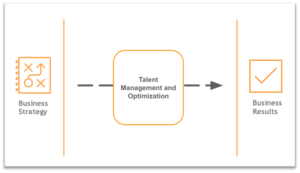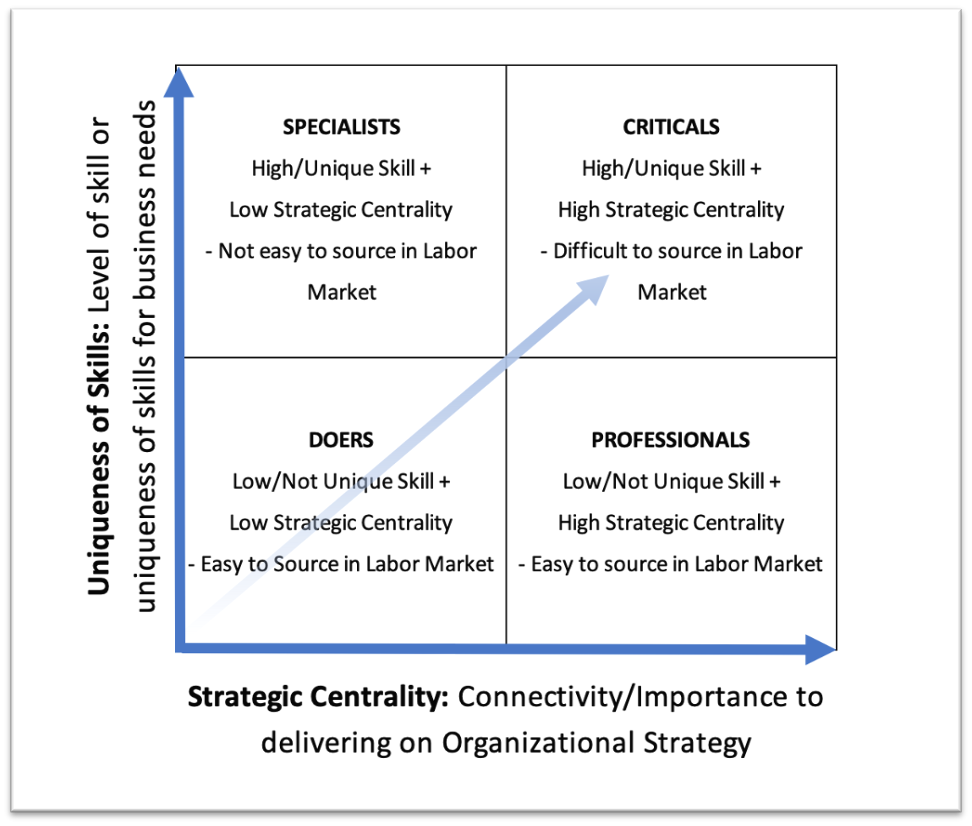It’s common for organizations to claim they prioritize talent development, but when it’s time to take action, the claim often proves to be a false narrative or undelivered promise. Whether from lack of time, resources or fear of losing employees, a lack of talent development almost always points back to one key issue: a missing link between an intentional talent development strategy and overarching business strategy.
 We often see organizations take a universal approach to talent development. This typically fails because of the disconnect between what companies want to offer their people and what they actually do offer. When resources are limited and distributed evenly across an organization’s talent base, businesses typically get an unproductive and ineffective result from their investment due to:
We often see organizations take a universal approach to talent development. This typically fails because of the disconnect between what companies want to offer their people and what they actually do offer. When resources are limited and distributed evenly across an organization’s talent base, businesses typically get an unproductive and ineffective result from their investment due to:
- Investing in talent that is not interested in developing further in the company.
- Not investing deeply in high potential employees, leaving them feeling undervalued and looking outside the organization for their next career step.
- Lacking a development plan and hindering the progress of the company’s talent and business strategy.
Some leaders feel it’s risky to invest significantly in talent development because employees may leverage their newly developed skills to get another job elsewhere. The truth is, you face more risk in not developing talented employees because you will lose your high performers and high potential team members who desire more.
To successfully connect talent development to your business strategy, consider these four steps.
- Identify Skill Level Positions
First, you need to identify the various skill-level positions within your organization using the Skill and Strategic Connection Quadrant method. To do this successfully, think about the position’s responsibilities and not the people who hold the positions. If you begin to think about the people, bias creeps in and the temptation to elevate everyone to the same importance becomes inevitable. Compare the uniqueness of skills to the strategic centrality, which is how much each role delivers on the organization’s strategy. Although strategic centrality may be a bit relative, comparing this to the uniqueness of skills gives you an effective way to begin prioritizing what types of trainings and development opportunities you should be providing. This ensures the skills and capabilities you are investing in are always connecting you back to your business strategy.
Those you consider the “criticals” to your organization should be your top priority. They are central to delivering your business strategy and have important intel and skills that would be costly to lose. “Specialists” and “professionals” should be your secondary priorities. These employees have unique skills and essential business knowledge important to your organization’s business strategy and require increased attention to retention efforts.
While “doers” are easier to source when a vacancy arises, this does not suggest people in these roles are unimportant; rather, training and development programs you invest in should primarily focus on talent in the other quadrants.
- Create Job Benchmarks
Once you understand where each role in your organization falls within these quadrants, you can consider what success looks like for these positions. Job benchmarking allows you to create an objective lens to look at the roles within your organization that are critical to your success. Consider the behaviors, drivers, rewards, motivators, acumen and competencies required for each position to successfully support your business strategy.
- Use Talent Assessments, Comparisons and Gap Reports
It is difficult to understand objectively each employee’s strengths, capabilities and potential fit within your organization without the help of proven and trusted tools to support your efforts. Assessments are commonly used, but rarely to their full capabilities. Using a similar approach to the job benchmarking process, you must assess and understand the talent within your organization using the same markers the job benchmarks created. This creates an objective lens through which you can view their current and future opportunities for growth of your people. Once talent assessments are completed, you can see what the job benchmarks require and how your talent compares to the requirements.
- Align and Invest in Intentional Talent Development
With the previous steps in place, your organization is on track to implement career pathing and intentional talent development. You have clarity and focus on what development needs exist, where your highest potential is and how to properly invest resources to support your organizational business strategy. As you choose where to invest in training and development, you can strategically place dollars into programs that directly deliver on your business strategy.
Are you ready to fill in the missing link for talent development? Are you ready to create the objective lens that will enable you to do so? As talent management and optimization experts, we can help you build the missing link and deliver business results.


